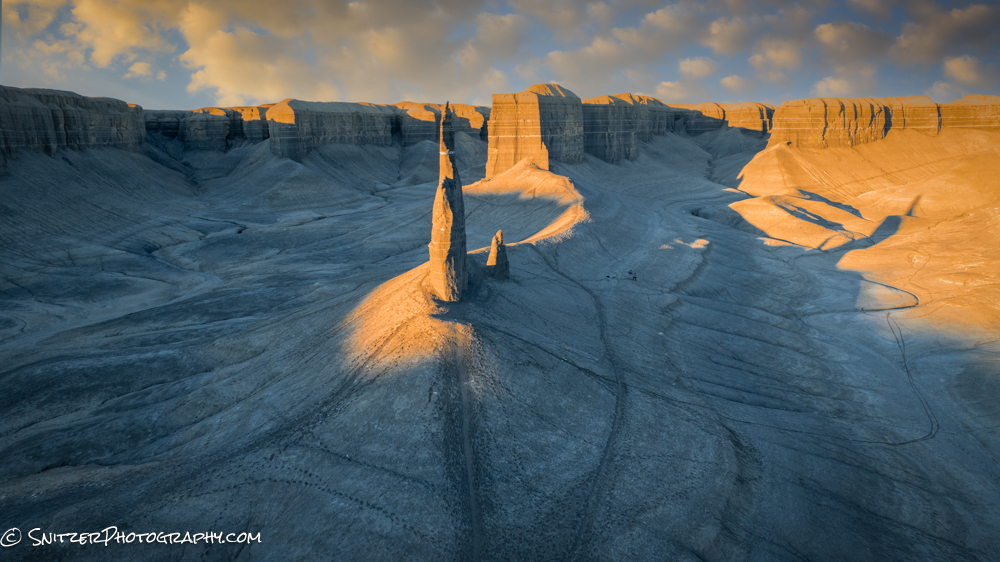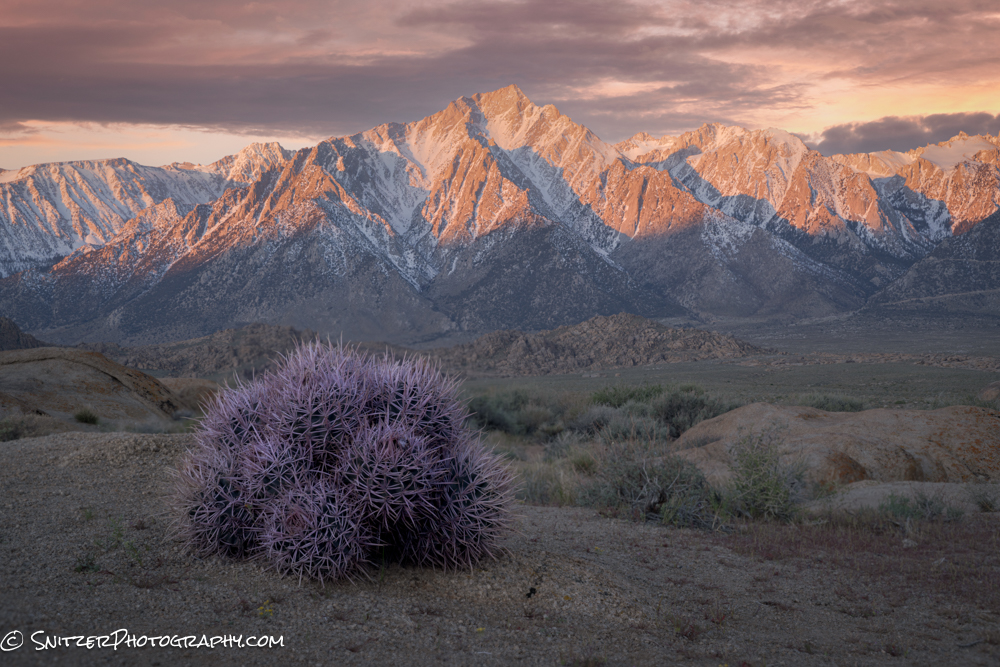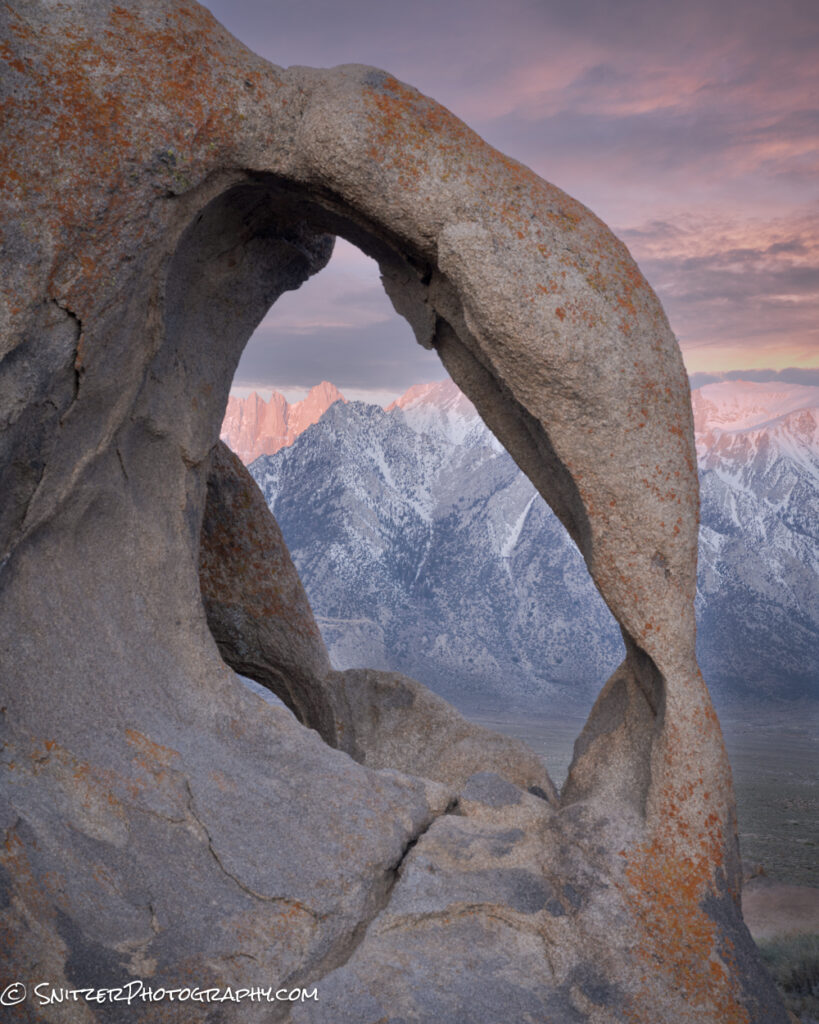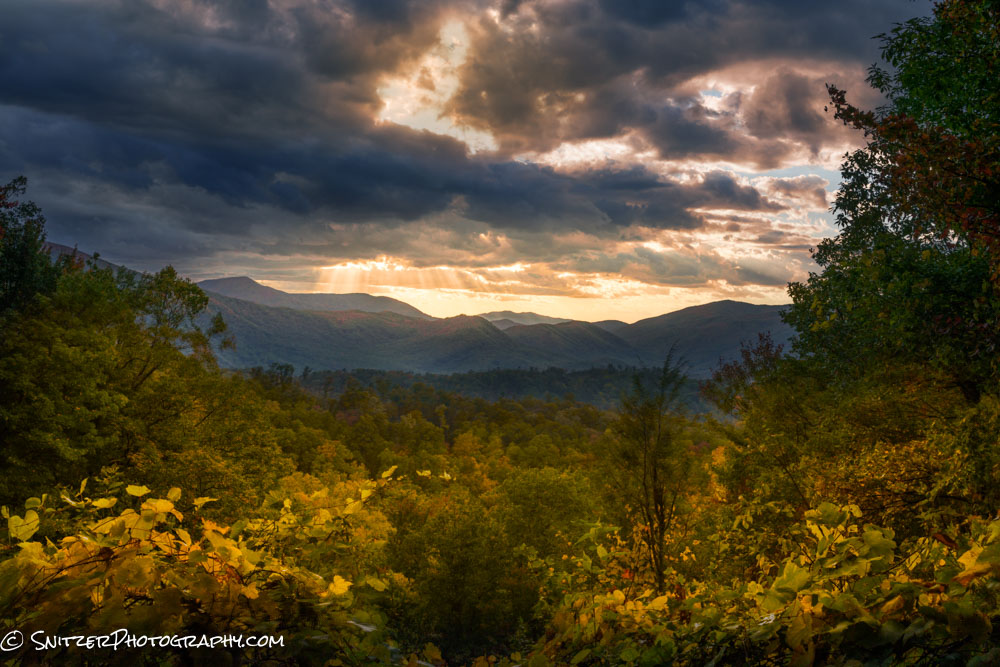Dolomites by mountain bike
I’ve been lucky enough to visit some great places, usually off a hiking or jeep trail. This summer I was invited to explore the Italian Dolomites with a small group of avid photographers (& riders) by mountain bike. We could access places that were too far to reach on foot and inaccessible by jeep. Talk about getting remote (seeing very few other humans)!
Plus, late-season rains had left the mountains full of wildflowers. Most days were partially stormy. Yes, we got dumped on a lot, but we also had amazing skies as the breaking squalls created bomber clouds. Wooo!
Our trip started after landing in Venice. My first time…pretty colorful.

Plus they have glassblowing! Who doesn’t love glassblowing?

Ok, time to fire up the map. The area we explored was approx 4.5 hours North by car. Most mornings started in a small village with a steep climb (2,000-4,000 ft) to a mountain plateau (ending at an elevation of between 6,000-7,000 ft). Ouch…my acking legs.

Those wildflowers I mentioned. Who’s the ugly bastard in the photo?

Ah, much better!

They have horses up here!

That are friendly and want a Snickers Bar.

And strange looking cows.

Biking on top of the world!

I also brought my trusty Mavic III drone. The low lying morning fog created some amazing ops for aerial photos.

What’s that green stuff down there!

Click the link for the full image gallery : https://www.snitzerphotos.com/Other/Galleries/Dolomites-2024/n-7SZCDc
Saving your Mavic III from sudden death!
I came close to losing my drone last week in Bravaria of all places. Some last-minute thinking in the heat of battle saved the day.
The specifics: I was flying the Mavic immediately after a breaking storm. It was dry where I was standing, but there was some moisture and drizzle on route home (I’d flown several miles to get the shot). About 2,000 feet from home the drone suddenly started rising fast. I disabled the “go home” command and tried to lower the drone but each time I tried it started climbing again. I had only about 10% battery left and had visions of my aircraft losing juice and falling like a rock to an untimely death
Then it occurred to me that perhaps the object avoidance sensors had fogged up with all the moisture and the drone thought it was going to hit something if it descended. I recalled that if I moved the drone from its “normal” mode to “sport mode” the sensors would be disabled. Once I did that, the drone obeyed my commands and I was able to manually bring the drone to a safe landing with little battery to spare.
Talk about a close call.
Utah Badlands-Death Valley-Alabama Hills
It’s tax season (Ap 15th) and time to explore America’s West! The Utah Badlands (Located near the town of Hanksville about 1 hour Southwest of Moab) offers some of America’s most badass ops for drone photography.
The spire shown below is hilariously known to locals at Long Dong Silver (Shot about 30 minutes before sunset).
Sunrise a great time to view the “Moon Overlook”. Honestly, it looks more like Mars to me.
About 7 miles away are the Bentonite Hills, formed from mud, sand and volcanic ash and created over 140 million years ago during the Jurassic period.
Another prominent feature of the area is Factory Butte shown under the Milky Way at 5am. I waited around till dawn to get the soft blue light that illuminated the foreground in the image below.
Ok, I need to keep moving. No rest for the weary. Next stop; Zion National Park and a view on route to my fav hike there, Angels Landing.
Shown below is the Milky Way arching across Zion’s night sky (4:30am). The rock walls are illuminated by the dim light of nearby Springdale, Utah.
Several days later I arrive in Death Valley which lies about 90 minutes West of Las Vegas. Yup that’s me disappearing into the sand dunes. Goodby cruel world.
This year the National Park was hit with unusual torrential rains, a once in a decade event. The result? Parts of the park which are normally dried clay now are carpeted with yellow Sunflowers.
In fact some areas have received so much water that they are now shallow lakes. Badwater Basin, normally looks like this!
Check out the difference now that it’s full of water. This pano shot taken at 2:30am features the Milky Way reflected in the mirror like water, now called Lake Manly.
Speaking of the Milky Way, nothing beats exploring a sand dune in the dark when you can’t see where you’re going. I have a few screws loose.
Final stop is the Alabama Hills, home to hundreds of Westerns that were filmed on location in eras past (located at the foot of Mt Whitney-shown below).
Below is the Cyclops Skull Arch framing the same Mt Whitney.
If you’d like to see my entire gallery of photos click the link below!
https://www.snitzerphotos.com/Other/Galleries/Death-valley-hanksville-alabama-hills/n-r9dm5M
Your Sony sensor has two “best” ISO points? 100 and 320?
Generally speaking, as you increase the ISO of your camera you lose dynamic range (DR), rather significantly I might add. For example, most full-frame mirrorless cameras can lose up to 3 stops of DR when increasing the ISO from 100-800. But here’s the rub, that’s not exactly right. Huh?
Your sensor has two native points which produce the best results. Long story short (for Sony A7r IV and V): 100 is your best ISO for low noise and DR. But 320 is the next best choice, better than 160 or 250? So generally speaking, if 100 doesn’t do the trick, crank things up to 320.

What’s better Lens Image Stab or In Body Image Stabilzation?
The new crop of mirrorless cameras features crazy good “in-body” image stabilization. Of course, this feature doesn’t work if you shoot with a lens that has image stabilization. WTF! The camera body will defer to the lens and shut down its own stabilization utility.
You know where I’m taking this. I’m going to pit my expensive Sony 100-400mm zoom lens ($2,500) against a cheaper Tamron 70-300mm lens ($545) without image stabilization (which can use the IS in my Sony A7rV). Caveat, the Sony will perform much better for fast-moving objects (aka sports) where IS doesn’t work. Our test will be for a stationary object (a good hypothetical test for Wildlife that’s not moving quickly).
Ok let’s start with hand held shots taken at 100mm, 10/10th of a second. Normally you’d want to shoot at 1/100th or faster at that focal length(1/local length). At a 1/10th we’re at 4 stops below recommended. At full size, both images look acceptably sharp.
Sony 100mm w lensIS turn on.

The Tamron using the Camera’s IS looks the same.

But cropping in at about 400% (in Lightroom) the Sony is showing some motion blurr.
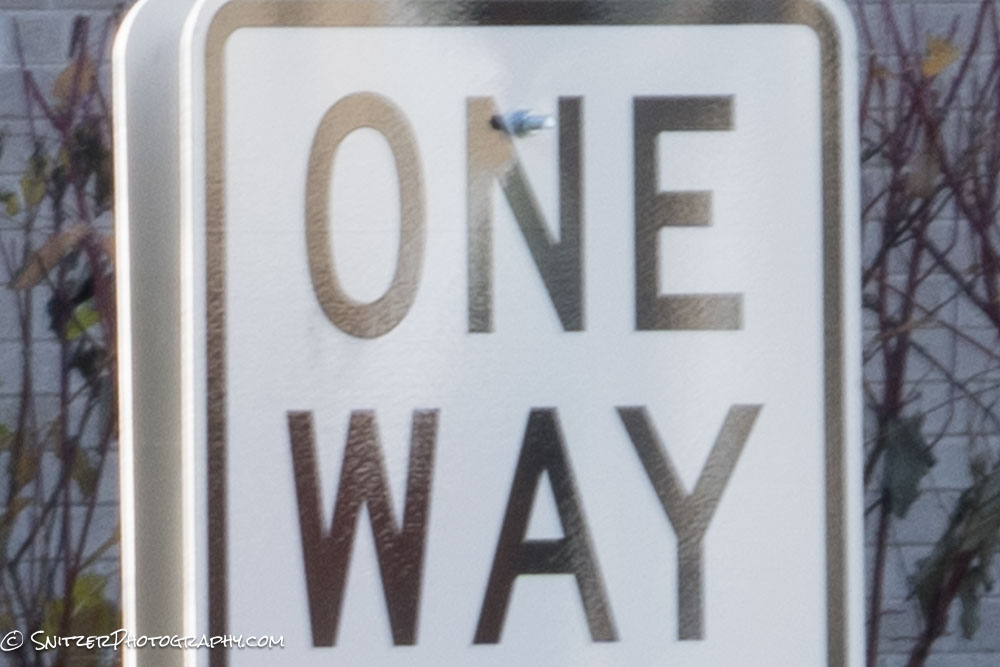
The Tamron lens using the in body IS is sharper.

This becomes more apparent at longer focal lengths where there’s more potential motion blurr.. Let’s try the same thing using 300mm (the image cropped at 200% in Lightroom). First the Sony. Yup, definately not in sharp focus.

Next the Tamron. Much better!

There you have it. The cheaper Tamron bests the expensive Sony (when IS is possible).
Snitz’s guild to explore Smoky Mnt NP
The Smokies are a great place to view fall color and hike! The mix of Maple, Oak, Birch, Beech, and Pine trees create postcard scenery and a diverse pallet of yellows, reds, and orange glowing foliage (reaching peak color around the 3rd week of Oct). That can change from year to year based on weather.
Unfortunately, this area can remind you of rush hour in LA. Others have discovered my secret. Tips on how to navigate around, and see the great stuff while avoiding the crowds: Let’s start with a map.
Most viewing/hiking in the park is centered around Cades Cove (& surroundings), the Foothills Parkway, and the Rt 441 corridor (which is a very target-rich environment). If you’re doing a week trip, the best place to stay for the first two days is in Townsend, a charming small town with excellent lodging, some solid restaurants, and few crowds.
The bulk of the epic views & hiking however is off of RT 441 and Gatlinburg is closer (saving you an hour of driving each way). Sadly, Gatlinburg is like the Wisc Dells on steroids. My compromise is to stay a few minutes North of the town (Gatlinburg Falls resort/cabins) and visit the local restaurants North of the City. Ergo stay out of the downtown!
The other key point: hit the trails early (like at sunrise). That way you’ll completely avoid the traffic and crowds on the trails. Leave late morning and you’re asking for a beating.

Time to hop aboard the Snitz tour bus. Let’s start with Cades Cove. This can be crowded with cars (avoid weekends) but offers some great wildlife viewing, cool frontier cabins and the popular Abrams Falls hike. This little guy was being protected under the watchfull eye of his mom at the tree’s base.
A nearby suitor waiting to put the moves on Mama Bear.
Some of the structures in Cades cover are almost 200 years old.
Next stop, the Foothills Parkway which has some fun hikes and pull outs featuring great views ot the valley floor. Fog builds up on particularly cold mornings provide great ops for sunrise imagery.
About 20 minutes from Cades Cove is the Lynn Camp, Middle Prong trail. One of my fav hikes in the park, the first several miles follow a colorful gorge with lots of rapids and small waterfalls.
As I mentioned the 441 corridor features some fantastic views (Newfound Gap, Clingman’s Dome) and epic hiking (Alum Cave to Mt Leconte, Chimney Tops).

Toward the end of 441 lies the town of Cherokee and the Oconaluftee Nature Center. A great place to hike along the river and if your lucky see herds of Elk.
Closer to Gatlinburg is the Roaring Fork Nature Trail Road which also features some impressive views.
I couldn’t resist launching the Spritzler Drone from this winding trail to capture the crazy canopy of color from 1200 ft up.
Lot’s more photos to view. Click the link for my full gallery!
https://www.snitzerphotos.com/Other/Galleries/Smokies-2023/n-5SqM6v/
The Minn Northwoods & Lake Superior
Silver Bay, Minn, a town formerly built on mining, is also a great base camp to explore the western shore of Lake Superior along with some exceptional nearby state parks that feature small inland lakes and some impressive waterfalls. I had no idea this type of diverse scenery was available in the Midwest. The area is located approx. 45 miles North of Duluth.
A great place to start exploring? Nearby Split Rock State Park has some great beaches, an additional cool rock shoreline and a photogenic lighthouse! 
Fifteen minutes away lies Gooseberry Falls State Park. A rainy late fall has the rivers running “full on”.

Tettegouche State Park is similarly spectacular and impossible to prounounce…haha.
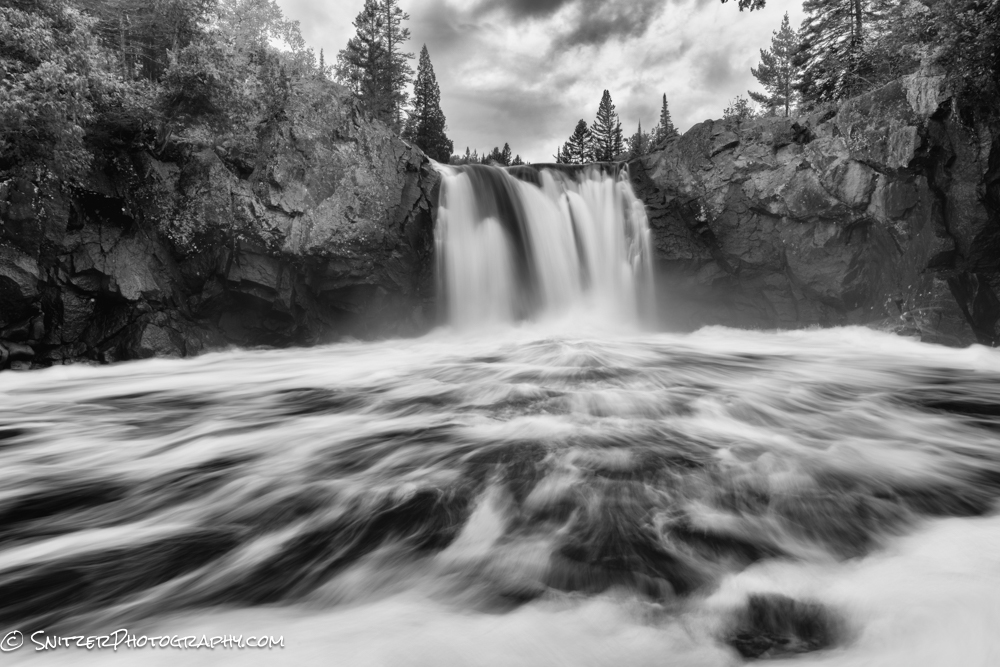
BTW, pull off almost anywhere and you’ll find a seldom travelled gravel road with amazing folliage!

This scene looks entirely different viewed from 400 ft above (The Snitz Mavic 3 drone)

Temperance River State Park offers both intimate river scenes and some massive waterfall drops with tall gorge walls!



My favorite view of the trip? Mt Oberg! Captured this after hiking in the dark @ 5:30am to catch first light. Image taken with a Mavic 3 drone to get the right vantage point.

The foliage on the way down wasn’t half bad either!
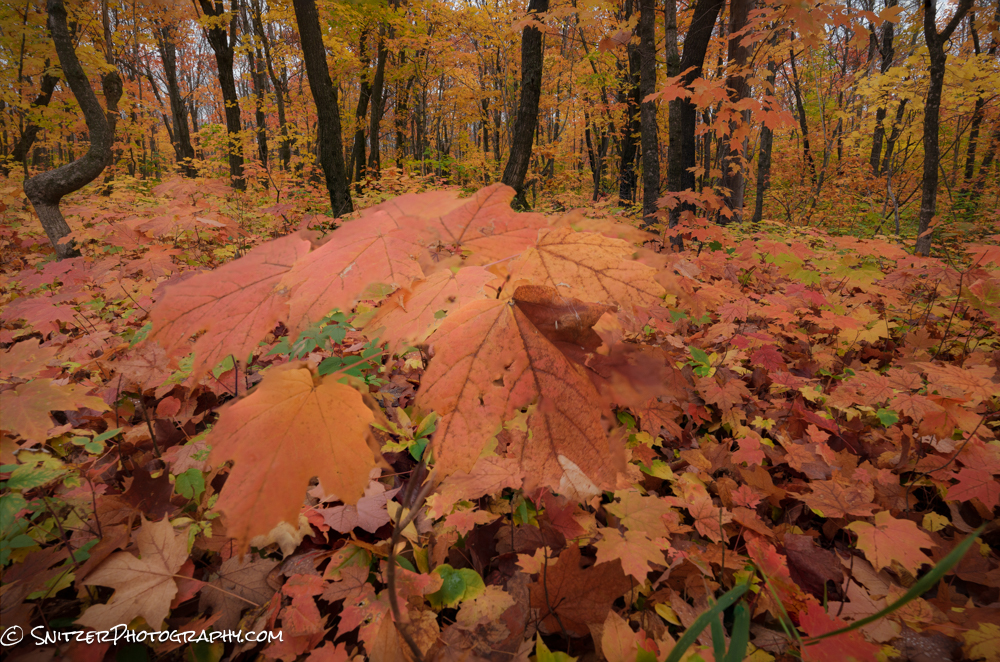
Link to the full gallery of images https://www.snitzerphotos.com/Other/Galleries/Minn-North-Woods/n-XPqRPR/
Snitz hits the Canadian Rockies!
I’ve been gumshoeing around mountains most of my life. The US has some amazing scenery; the Rockies, Sierra’s, Cascades, Uintas, Denali, and Smokies. None of these places hold a candle to the scenery between Lake Louise and Jasper, Alberta. Sorry America, the Canucks have you beat.
The peaks are higher, more frequent and seem always to have some bomber lake in the foreground—a photographer’s paradise.
Shown below is the view in front of the Lake Louise Chateau Hotel. The hotel is a great starting point for a number of great hikes.
One of these, the Plain of Six Glaciers, takes you about 4.5 miles up a canyon (2,200 ft vert) we’re we unexpectedly ran into a tea house! Not kidding. How cool is that? They also serve a mean vegetarian Chili.
Hanging with the Mrs.Talk about a great lunch spot with a view.
Perhaps the most photographed icon in this Region is Moraine Lake. Crowded with people…you bet.
A quick 10-minute drive takes us to Herbert Lake. Sadly, the sun rises at 5:30 am! Ouch, I’m out of bed at 430am for this sheet. The rocks along shore make a great foreground. 
Southwest of Lake Louise lies the very remote area around Lake Ohara. It took us two years to get a cabin in the Park: only 13 cabins and very limited camping. You basically have this crazy area to yourself. Did I mention we showed up after they got hit with 3 inches of snow (in late June)! The view below taken from the lake’s North Shore.
This lake features a variety of “killer” views! This one taken looking Northwest.
Hiking from our Lake Ohara Lodge, your fearless leader gaining altitude looking down on Mary Lake(justSouth of Ohara).
Speaking of altitude, I got the bright idea to hike about 1,500 ft up another drainage to get this waterfall at dusk. Fortunately I had my trusty flashlight for the hike down as things darkened significantly. No bears however!
All aboard! The Canadian Pacific railroad runs what seems like 30+ trains a day through the mountains. If you are patient enough, you might catch one! This shot captured at the well known Morant’s Curve vantage point.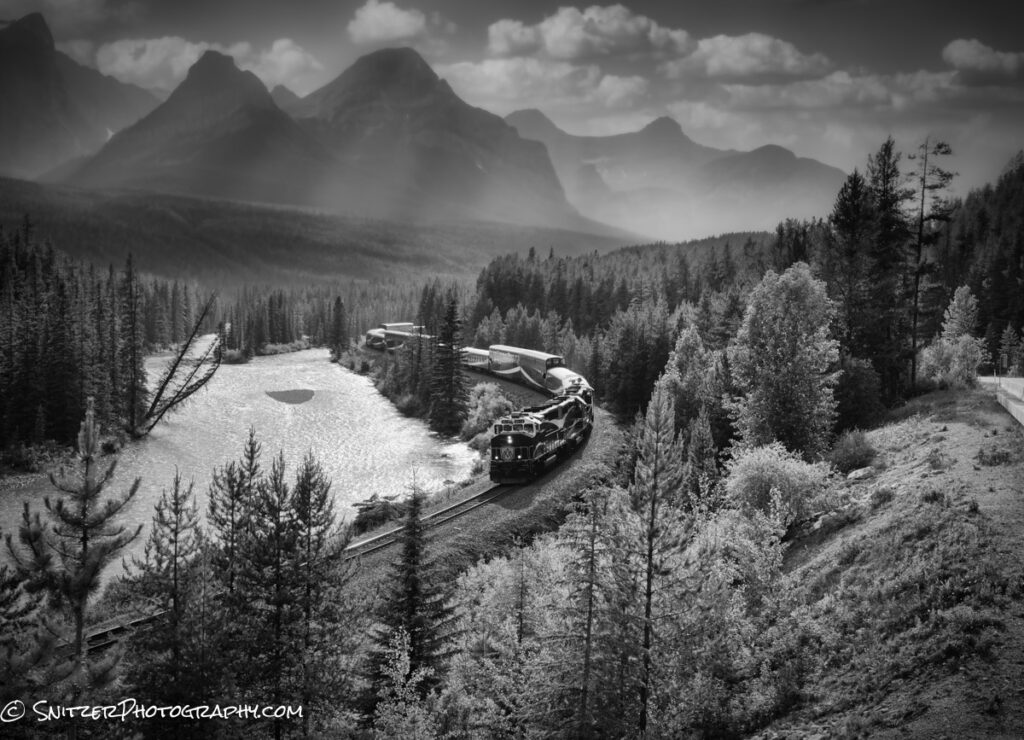
Slightly up the Glacier Parkway (heading North) is Bow Lake. I arrived as another snowstorm was just breaking leaving more snow on the mountain and surreal skies.
That’s Mrs. Snitz standing atop Peyto Lake one of the other most photographed spots in the area. 
And below our pet Marmot named Rover.
Athabasca Falls (just outside Jasper).
There’s lots more. Check out the link below.
https://www.snitzerphotos.com/Other/Galleries/Canadian-Rockies-Summer-2023/n-hLDVt7/
Snitz visits Croatia & Slovinia
These Slavic countries offer some wonderful unspoiled scenery, a little like the Italian Dolomites. Punctuated with historic (I mean 500+ years old) small towns they’re inhabited by a friendly populace that likes American tourists! Plus, you can walk anywhere at night and feel safe. The price to stay in great lodging and enjoy bomber dining is substantially less than in the States—a comparative bargain.
So what’s there to see? Let’s start with one of the craziest massive waterfalls on the planet, Veliki Slap which falls 300ft. (Plitvice Lake National Park, Croatia). Why they call waterfalls Slaps is beyond me.

Yes, the fishermen are getting wet.

Sibenik, a coastal town (also in Croatia).

And the very old City of Dubrovnik. How old? Like 7th Century.
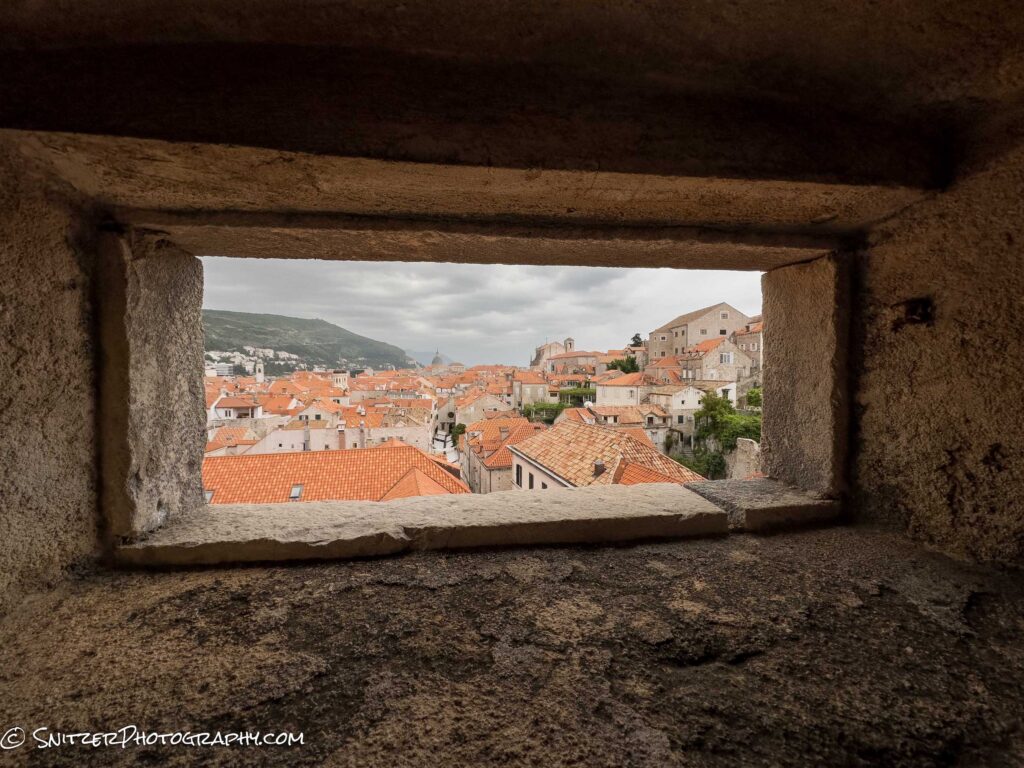

As we drive North we enter the nation of Slovenia. Lake Bled reminds me of the Sound of Music. Some fun shots taken from the footpath that circles the lake. The Church of Mary the Queen dates back to 1534.
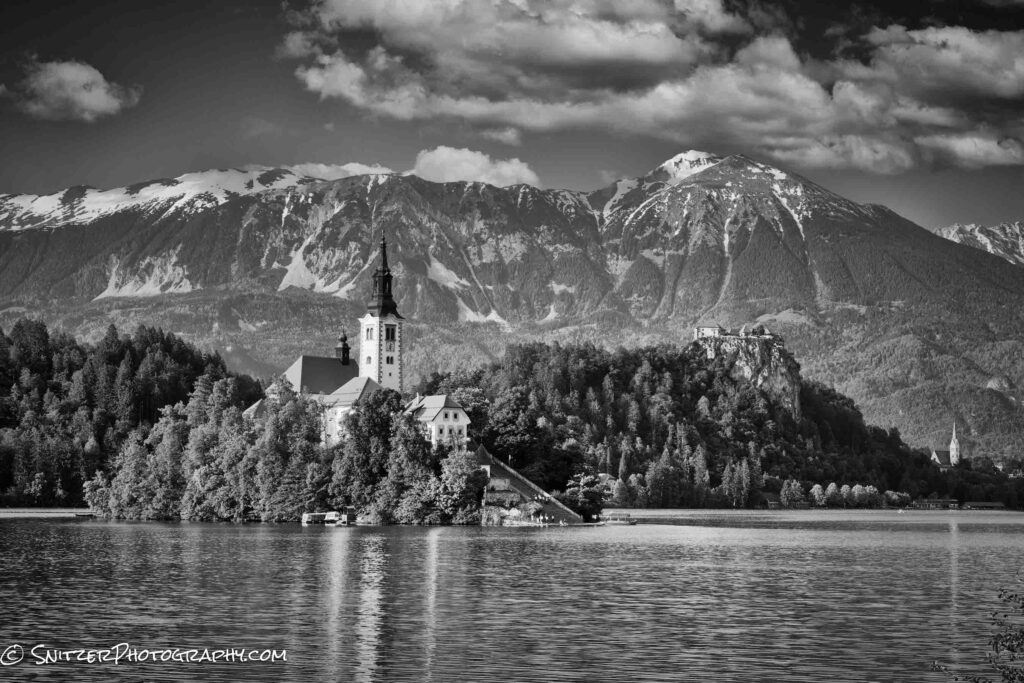

Ok, time to fire up the Spritzler drone. Pictured immediately below is Bled Castle (circa 1011).

High above the church. I’m getting a nose bleed.
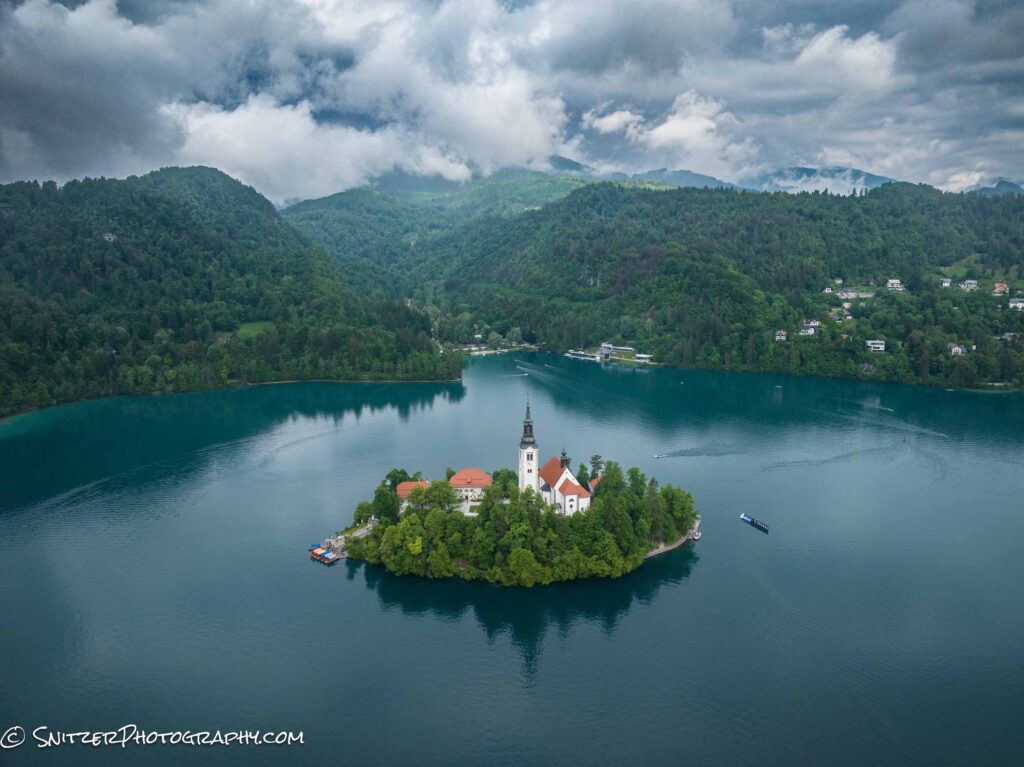
And Bohinjsko, Slovinia

Continuing to head North we reach the Soca River Valley.

What a cool place to Kayak!
Link below to high res gallery of photos
https://www.snitzerphotos.com/Other/Galleries/Croatia/n-ZZJr4F/
Snitz hits Zion, Death Valley & a Martian Desert.
Wondering how to get the full moon to show up on cue? Ans. you need to be a tech geek. I use a program called the Photographer’s Ephemeris to figure out when the moon will be full and, more importantly, when it will be setting to the West around sunrise (sky not too bright or dark). Ergo, I want the sun coming up behind me and the moon in front of me. I also, need to figure out how to get the angle of the moon just right (in relation to what I’m photographing). I told you this requires a photo geek!
Zion’s Canyon Overlook lined up just perfectly a few weeks ago!
The next morning I tried another Zion spot (just behind the Human History Museum) and BAM.
Not done yet. Hopped in the car and made the 5 hour drive to Death Valley. The next morning I’m chasing that moon again, this time at an the iconic Zabriskie Point.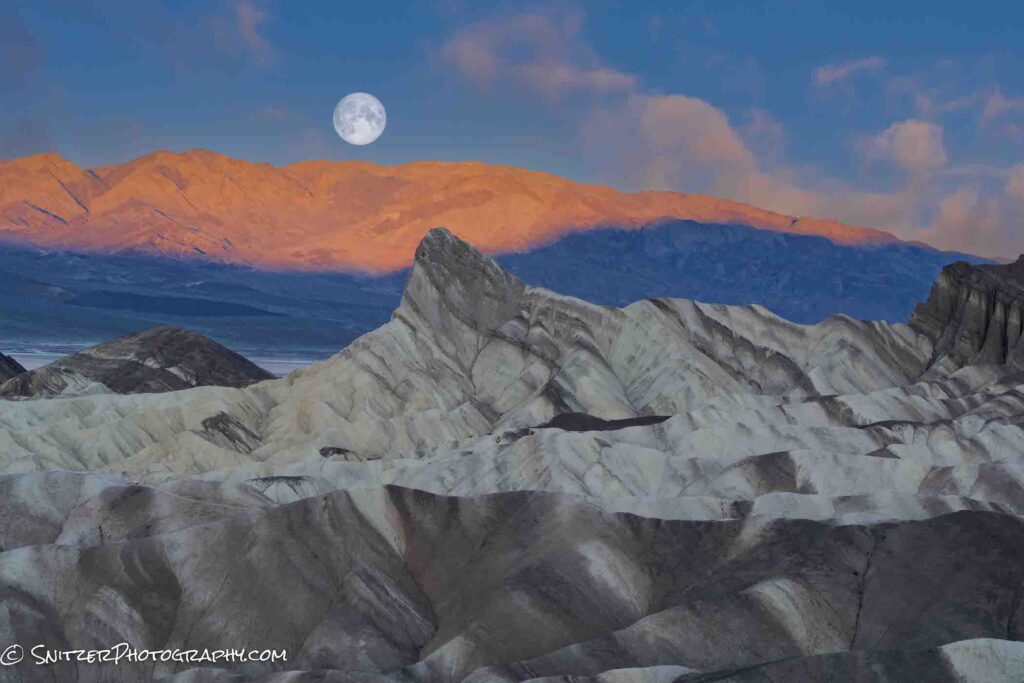
Death Valley, of course, has a bunch more to offer! Portions of the desert floor flooded last August causing the mud bottom to dry into a mosaic of fantastic shapes.
There are also miles of cool looking sand dunes, bracketed in the rear by the Cottonwood Mountains. One of my buddies shown below to put things into perspective.
If you look hard enough, you can even find water in America’s hottest place.
The pictures above are literally taken at sea level. Parts of the park sit almost 5,000 ft higher, offering spectacular views.
About 90 minutes West of the Park lies California’s Alabama Hills. At the base of Mount Whitney, this area was home to hundreds of westerns. Pictured below is the iconic Mobius Arch.
Hey, gotta keep moving. Time to start heading back. On route is an other worldly place called Goblin Valley. The early morning sun creates some long shadows across the desert floor. Those funny looking sculptures down there are called “hoodoos”.
Last stop, a Martian landscape in the Utah Badlands. Ironically at ground level the scenery looks very uninteresting. Boring in fact! But fly a drone 1,600 feet above and you see some incredible patterns.
More cowbell?
Coming in for a landing we angle the camera up a little to see the surrounding neighborhood.
There’s plenty more to see! Click the link below to check out the entire gallery:
https://www.snitzerphotos.com/Other/Galleries/Zion-death-valley-alabama-hills-utah-bdlnds/n-cmhVLf/

